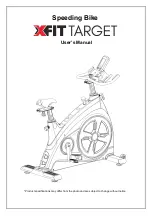
•
For faster download in the field, or to save disk space, un-
check the ‘Decompress’ checkbox.
This will disable the decompression step of the offload process, meaning you will end up
with ‘sud‘ files only. These can be decompressed into wav files at a later time using the ‘File
Extraction’ option under the tools menu.
3
More details
3.1
Data Files
Downloads produce several types of files:
o
‘sud’ files which are the raw downloaded file. This is a compressed file and therefore
ideal for storing or sending of complete recordings. It can then be decompressed at
a later time into the following constituent file formats.
o
‘wav’ files containi
ng the audio. This is a Microsoft WAV format file that can be
opened by any media player, matlab, raven etc.
o
‘xml’ files which contain metadata such as date recorded, gain setting, etc.
o
‘csv’ files containing ancillary sensor data (e.g. temperature)
All file types follow the same naming convention consisting of the device serial number followed by
the date and time of the start of the recording in the format YYMMDDHHMMSS.
For duty cycled recording there will usually be one file per recording period. For continuous
recording a maximum file length of 1036800000 samples (2GB of wav) will determine the length of
the files. This equates to 1 hour recordings for a 288khz sample rate.
Where smaller than 2G files are desired for continuous recording it is recommended to set a duty
cycle with ‘zero off time’. For example, a duty cycle of 30 minutes every 30 minutes will result in
continuous 30 minutes files with no missing samples between files.










































